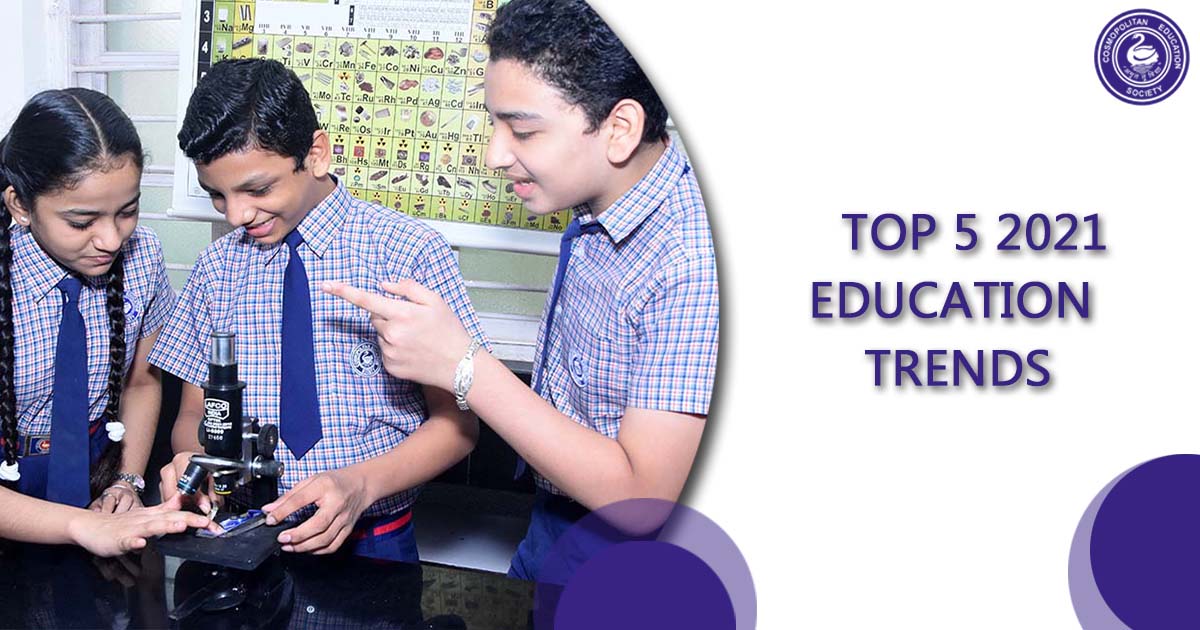
2021 Education Trends You Much Watch Out For
Despite being a year of global grief due to the Covid19 Virus outbreak, 2020 brought about a seamless blend of technology and education, such as the widespread switch to online schooling, the rise in the use of various applications and hybrid learning technologies for effective teaching and learning. It’s likely that teaching will continue to make use of digital technology for the foreseeable future. With this comes newer challenges and the need for upgraded digital skills.
Read more to understand what are the projected trends in the education industry for the year 2021.
1. Learning in Bits and Pieces
The information era has led to a decline in attention spans and an increase in screen fatigue. Our minds are overloaded with distracting alerts and notifications day in day out. These signals are then responded to and hence increases stress hormones. As a result of which our minds are diverted to many small distractions making it impossible to concentrate on one thing for long.
Such distractions also persist in a classroom and a teacher is responsible to aid the students to overcome this challenge. Next question is, how do we solve this problem of being an attention deficit? The answer is, nano-learning. In a nutshell, nano-learning involves providing students with information in smaller amounts, over a shorter period of time.
Nano-learning has been proven to increase the ability to take in and retain information. By providing your students with small, “pellet” like bits of information, you are much more likely to increase their productivity, capture their attention and aid their ability to learn.
2. Augmented Reality
Augmented reality (AR) has been a ground-breaking technology which are entering classrooms like a storm.
You can experience augmented reality simply through access to a smartphone or tablet. AR as a technology projects images, sound and videos using the device camera and is displayed on your mobile or tablet screen. This technology displays layers of these images on top of what can be seen on the camera. The best example of AR, Google search allows you to see different animals in your environment. Here your mobile screen blends google search of animals in your current environment. So you could be looking at a monkey sitting next to your desk.
Students need a reason to go beyond the walls of a classroom and AR gets you to achieve it. Students engage with digital technologies like VR because it inspires them to think beyond the four walls of the classroom.
Some tips to incorporate AR in the classroom?
Field Trips: You can take students on a tour around the best galleries, museums and cities in the world, without leaving the classroom.
Virtual Careers: It offers the opportunity for students to find out about a range of careers. It allows you to be in the shoe of a teacher. Engineer, accountant, etc. this can help the gage experience of what it’s like to do different jobs.
High-tech Training: AR can project real-life training. For example, it can show students the anatomy of the body from the inside out.
Language Learning: The best way to learn a language is through the total immersion technique. AR can immerse students in a foreign language, by virtually placing them in the middle of a virtual world, hearing only their target language.
3. Project-based Learning
Project-based learning is a teaching method that actively engrosses the students in real-life, real-time projects. The idea is that students learn by doing’, with teachers acting as an anchor or a facilitator.
The main idea of project-based learning is to have students investigate and respond to a complex question or issue. This will help them develop skills like critical thinking, creativity, collaboration and communication skills; all of which are highly sought after 21st-century skills, appreciated by employers. You can start with basic general topics like Finding solutions to waste management in India. After you have disclosed the topic you need to make small groups of 4-5 students and ask them to brainstorm within their respective groups. Then you can encourage them to start their research post discussion, use the internet to gain some focal points. Once you have given them an ample amount of research time you open the class for discussion and debates. Its proven that Knowledge searched with the help of self-research and discussion is more likely to be remembered.
4. Experiential learning
These days there are maximum students who are disengaged with reality due to an increase in their screen time. Mobile phones and PSPs are spending more time with them compared to before. The only way to get out of this mess is to encourage and plan experiential learning techniques.
Now common in schools worldwide, the experiential learning approach involves absorbing students into real-world situations. It not only offers first-hand experiences in which they need to practice planning, decision-making, teamwork but also evolves them as a student. Although this can be done out of the classroom, for example going to the garden to understand the parts of a plant, but in 2021 with the introduction of Augmented reality, things are moving online.
5. Online schooling
Online learning is the most popular educational trend for 2021 – something born out of necessity in 2020 due to the pandemic. Of course, with various upgrades in the field of education and technology, this is now becoming possible on a large scale. Schools had no option but to turn virtual fueling online learning.
So, what do you think, why is online learning so popular? It is because it’s not only flexible and but also very cost-effective. Additionally, it can cater to a wider range of learners as it removes the limitation of ‘Venue’. Therefore, online learning has broken down boundaries in the field of education and giving higher opportunities to students from all over the world to leverage specialty learning.
Summing up:
At Shri. Harshad C. Valia International School we believe in giving world-class education facilities to our younger generations. We hence invest time and efforts in trending teaching techniques in order to deliver a beneficial learning experience.
